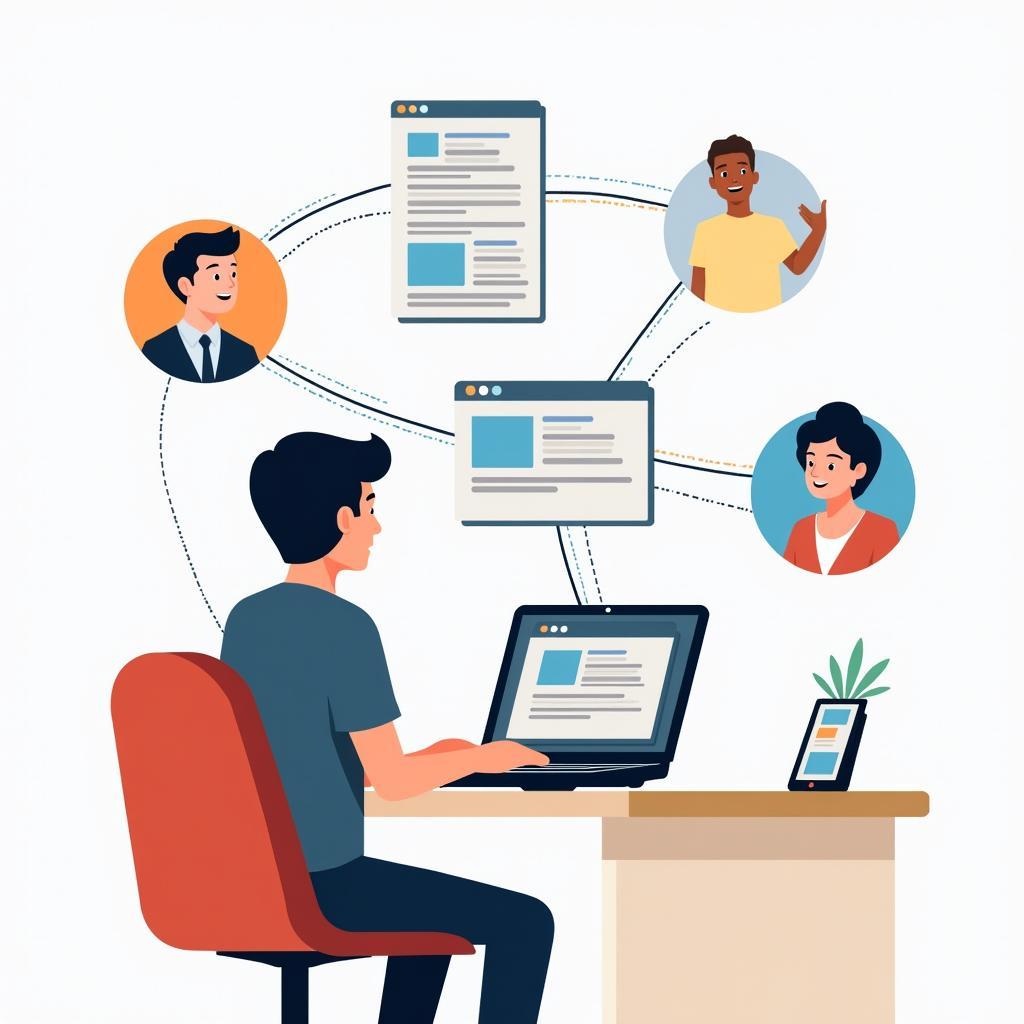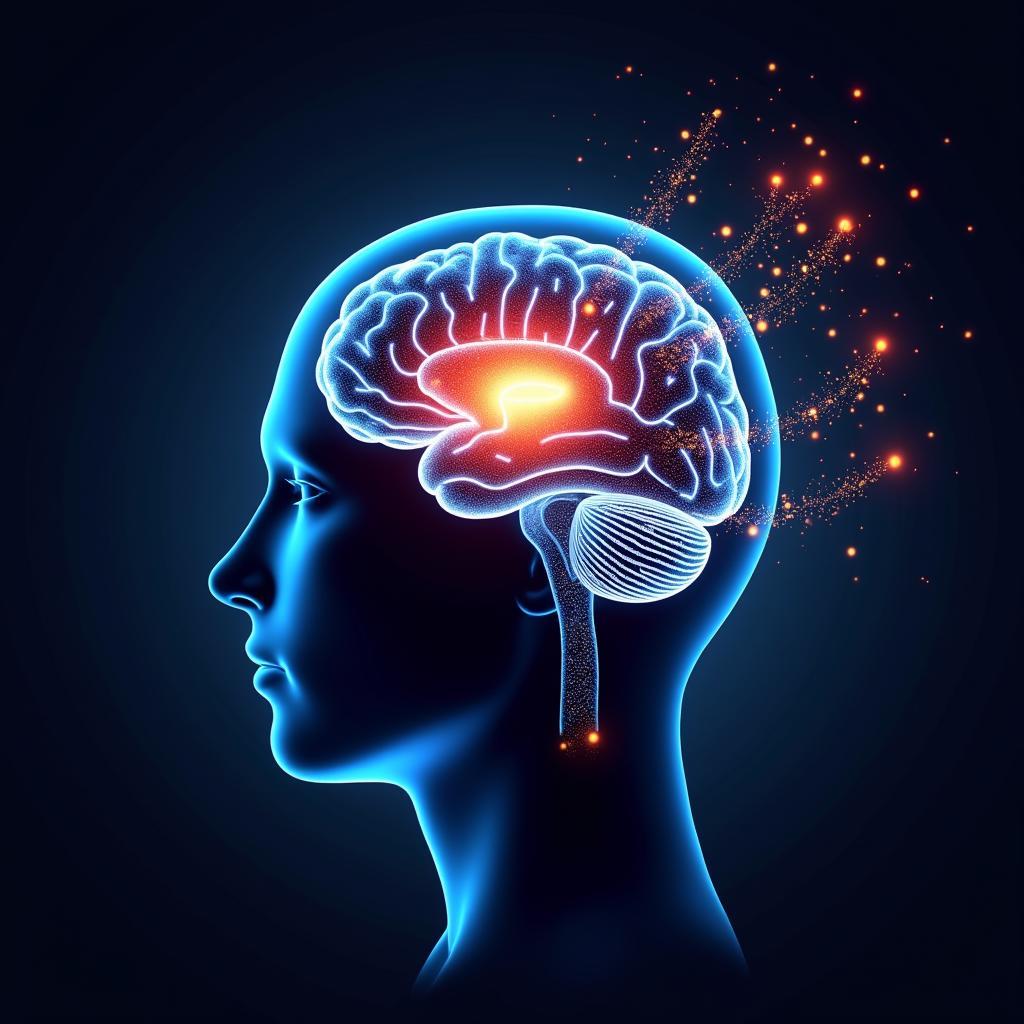Critical thinking plays a crucial role in digital literacy education, and this skill is extensively tested in the IELTS Reading module. To help you prepare effectively, we’ve created a practice test that focuses on this important topic. Let’s dive into a full IELTS Reading test, complete with passages, questions, and answers.
Nội dung bài viết
- Passage 1 – Easy Text
- The Importance of Critical Thinking in the Digital Age
- Questions 1-5
- Questions 6-10
- Passage 2 – Medium Text
- Critical Thinking Strategies for Evaluating Online Information
- Questions 11-14
- Questions 15-20
- Passage 3 – Hard Text
- The Neuroscience of Critical Thinking in Digital Environments
- Questions 21-26
- Questions 27-32
- Questions 33-36
- Answer Key
- Passage 1
- Passage 2
- Passage 3
Passage 1 – Easy Text
The Importance of Critical Thinking in the Digital Age
In today’s rapidly evolving digital landscape, the ability to think critically has become more important than ever. As we navigate through vast amounts of information online, it is crucial to discern fact from fiction and make informed decisions. Critical thinking skills enable us to analyze, evaluate, and interpret information effectively, helping us to avoid falling prey to misinformation and cognitive biases.
 Person carefully analyzing online information on a laptop to distinguish between facts and misleading content in the digital age.
Person carefully analyzing online information on a laptop to distinguish between facts and misleading content in the digital age.
Digital literacy education plays a vital role in developing these critical thinking skills. By teaching students how to assess the credibility of online sources, identify logical fallacies, and question assumptions, we equip them with the tools necessary to thrive in the digital world. This education goes beyond mere technical skills; it fosters a mindset of inquiry and skepticism that is essential for lifelong learning.
The impact of digital learning environments on student engagement has been significant, providing new opportunities for interactive and collaborative learning experiences. These environments can be leveraged to enhance critical thinking skills through problem-solving activities, debates, and simulations that challenge students to apply their analytical abilities in real-world scenarios.
 Students in a modern classroom engaging with digital tools for critical thinking education, learning to assess online source credibility.
Students in a modern classroom engaging with digital tools for critical thinking education, learning to assess online source credibility.
Moreover, critical thinking in the digital age involves understanding the broader implications of technology on society. Students must learn to consider the ethical dimensions of digital technologies, such as privacy concerns, data security, and the potential for algorithmic bias. By developing a critical perspective on these issues, individuals can become more responsible and empowered digital citizens.
Questions 1-5
Do the following statements agree with the information given in the passage? Write
TRUE if the statement agrees with the information
FALSE if the statement contradicts the information
NOT GIVEN if there is no information on this
- Critical thinking is less important in the digital age than it was in the past.
- Digital literacy education focuses solely on teaching technical skills.
- Digital learning environments can enhance critical thinking skills through interactive experiences.
- All online information is equally credible and trustworthy.
- Understanding the ethical implications of digital technologies is part of critical thinking in the digital age.
Questions 6-10
Complete the sentences below. Choose NO MORE THAN TWO WORDS from the passage for each answer.
- Critical thinking skills help us avoid falling prey to misinformation and ________.
- Digital literacy education teaches students how to assess the ________ of online sources.
- The digital age requires a mindset of inquiry and ________ for lifelong learning.
- Digital learning environments provide opportunities for ________ and collaborative learning experiences.
- Developing a critical perspective on digital issues helps individuals become more responsible ________.
Passage 2 – Medium Text
Critical Thinking Strategies for Evaluating Online Information
In an era where information is readily available at our fingertips, the ability to critically evaluate online content has become an indispensable skill. The internet, while a valuable resource, is also a breeding ground for misinformation, biased reporting, and pseudoscientific claims. Developing robust critical thinking strategies is essential for navigating this complex digital landscape and making informed decisions.
One fundamental strategy is to scrutinize the source of information. This involves not only identifying the author or organization behind the content but also assessing their credentials, expertise, and potential biases. Reputable sources typically provide transparent information about their authors, methodologies, and funding sources. However, it’s important to note that even well-respected sources can sometimes publish inaccurate information, underscoring the need for continual vigilance.
 Close-up of a hand holding a magnifying glass over a website's author section to scrutinize credentials and potential bias for online information evaluation.
Close-up of a hand holding a magnifying glass over a website's author section to scrutinize credentials and potential bias for online information evaluation.
Another crucial aspect of critical thinking in the digital realm is the ability to cross-reference information. This practice involves comparing multiple sources to verify facts and gain a more comprehensive understanding of a topic. By consulting diverse perspectives, including those that challenge our existing beliefs, we can develop a more nuanced and accurate view of complex issues.
Digital archives for student research have become invaluable tools in this process, providing access to a wealth of primary sources and scholarly articles. These archives enable students to delve deeper into topics, corroborate information, and develop their analytical skills by working with original documents and data.
 Student using multiple screens and digital archives to cross-reference information, verifying facts from diverse online sources for a research project.
Student using multiple screens and digital archives to cross-reference information, verifying facts from diverse online sources for a research project.
Critical thinkers must also be adept at identifying logical fallacies and rhetorical devices commonly used to manipulate opinions online. Ad hominem attacks, straw man arguments, and appeals to emotion are just a few examples of tactics that can distort rational discourse. Recognizing these techniques allows individuals to focus on the substance of arguments rather than being swayed by persuasive but logically flawed reasoning.
Furthermore, the digital age demands a heightened awareness of the role of algorithms and personalized content in shaping our online experiences. Critical thinkers must consider how their digital footprint and search history might create echo chambers or filter bubbles that reinforce existing beliefs and limit exposure to diverse perspectives. Actively seeking out alternative viewpoints and using a variety of search engines and platforms can help mitigate these effects.
Lastly, developing media literacy skills is crucial for interpreting visual information, understanding the context of digital content, and recognizing manipulated or misleading imagery. With the rise of sophisticated image and video editing tools, the ability to discern authentic media from altered or fabricated content has become increasingly important.
Questions 11-14
Choose the correct letter, A, B, C, or D.
-
According to the passage, which of the following is NOT mentioned as a strategy for critical thinking in the digital age?
A) Scrutinizing the source of information
B) Cross-referencing information from multiple sources
C) Relying solely on well-respected sources
D) Identifying logical fallacies and rhetorical devices -
The passage suggests that digital archives are useful for:
A) Replacing traditional research methods
B) Providing access to primary sources and scholarly articles
C) Eliminating the need for critical thinking
D) Creating echo chambers -
What does the author suggest about algorithms and personalized content?
A) They always provide the most relevant information
B) They can create echo chambers that limit diverse perspectives
C) They should be the primary source of information
D) They eliminate the need for cross-referencing -
Which of the following best describes the importance of media literacy skills according to the passage?
A) They are only necessary for professional journalists
B) They help in recognizing manipulated or misleading imagery
C) They are less important than other critical thinking skills
D) They are only relevant for social media users
Questions 15-20
Complete the summary below. Choose NO MORE THAN TWO WORDS from the passage for each answer.
Critical thinking in the digital age involves several key strategies. First, it’s important to (15) __________ the source of information, including the author’s credentials and potential biases. (16) __________ information across multiple sources is also crucial for verification. Digital archives provide valuable resources for this process, allowing students to access (17) ________ and scholarly articles.
Recognizing (18) __________ and rhetorical devices is essential to avoid being manipulated by flawed reasoning. Additionally, being aware of how algorithms create (19) __________ can help individuals seek out diverse perspectives. Lastly, developing (20) ________ skills is vital for interpreting visual information and recognizing altered content in the digital world.
Passage 3 – Hard Text
The Neuroscience of Critical Thinking in Digital Environments
The rapid proliferation of digital technologies has not only transformed our access to information but has also significantly impacted the way our brains process and evaluate that information. Neuroscientific research into critical thinking in digital environments has revealed fascinating insights into the cognitive processes underlying our ability to navigate the complex landscape of online information. This emerging field of study combines elements of cognitive psychology, neurobiology, and information science to elucidate the neural mechanisms that support effective critical thinking in the digital age.
One of the most significant findings in this area of research is the observation of neuroplasticity in response to digital media consumption. Studies utilizing functional magnetic resonance imaging (fMRI) have demonstrated that frequent engagement with digital platforms can lead to structural and functional changes in brain regions associated with attention, decision-making, and critical analysis. The prefrontal cortex, in particular, shows enhanced activation patterns in individuals who regularly practice critical evaluation of online content. This suggests that the brain’s capacity for critical thinking can be strengthened through consistent exposure to and interaction with diverse digital information sources.
 Abstract fMRI brain scan showing enhanced prefrontal cortex activity, illustrating neuroplasticity from digital media engagement and critical thinking practice.
Abstract fMRI brain scan showing enhanced prefrontal cortex activity, illustrating neuroplasticity from digital media engagement and critical thinking practice.
However, the digital environment also presents unique challenges to our cognitive processes. The phenomenon of information overload, characterized by the constant barrage of data from multiple digital channels, can overwhelm the brain’s ability to process and critically evaluate information effectively. Neuroscientists have observed that this overload can lead to a state of cognitive fatigue, resulting in decreased activity in the anterior cingulate cortex and dorsolateral prefrontal cortex – areas crucial for executive function and critical analysis.
 Person experiencing cognitive fatigue from information overload, surrounded by multiple glowing screens displaying excessive data, impacting critical analysis.
Person experiencing cognitive fatigue from information overload, surrounded by multiple glowing screens displaying excessive data, impacting critical analysis.
The influence of digital portfolios on student self-reflection has been a subject of particular interest in educational neuroscience. Research indicates that the process of curating and reflecting on digital artifacts engages multiple cognitive domains, including metacognition, self-awareness, and analytical reasoning. This multifaceted cognitive engagement has been shown to enhance synaptic plasticity in the hippocampus and prefrontal regions, potentially improving long-term retention of knowledge and critical thinking skills.
Another intriguing area of study is the impact of hypertext and non-linear information structures on cognitive processing. Unlike traditional linear texts, hyperlinked digital content requires the brain to make rapid decisions about navigation and relevance. This constant decision-making process has been found to increase activity in the dorsolateral prefrontal cortex and posterior parietal cortex, areas associated with working memory and attentional control. While this increased neural engagement can potentially enhance cognitive flexibility, it also poses the risk of cognitive overload and shallow processing if not managed effectively.
 Conceptual image of a brain navigating a complex network of hyperlinked digital content, showing increased activity in working memory and attention control areas.
Conceptual image of a brain navigating a complex network of hyperlinked digital content, showing increased activity in working memory and attention control areas.
The role of emotions in critical thinking within digital contexts has also garnered significant attention from neuroscientists. The limbic system, particularly the amygdala, plays a crucial role in emotional processing and can significantly influence cognitive evaluation. In digital environments, where information is often presented with emotional cues (e.g., sensationalist headlines or emotive imagery), the interplay between emotional reactivity and rational analysis becomes particularly salient. Neuroscientific evidence suggests that individuals with better emotional regulation, as indicated by increased activity in the ventromedial prefrontal cortex, tend to demonstrate more effective critical thinking skills when evaluating emotionally charged online content.
Furthermore, the concept of digital metacognition – the awareness and understanding of one’s own thought processes in digital environments – has emerged as a critical component of effective online critical thinking. Neuroimaging studies have shown that individuals who actively engage in metacognitive strategies, such as reflecting on their online information-seeking behaviors and questioning their own biases, exhibit increased activation in the anterior prefrontal cortex and posterior cingulate cortex. These brain regions are associated with self-reflection and cognitive control, suggesting that fostering digital metacognition could be a powerful approach to enhancing critical thinking skills in the digital age.
 Illustration of a person with a thought bubble showing self-reflection on their online information consumption and biases, representing digital metacognition.
Illustration of a person with a thought bubble showing self-reflection on their online information consumption and biases, representing digital metacognition.
Digital innovation in humanities education has provided new opportunities to study the neural basis of critical thinking in interdisciplinary contexts. By combining digital tools with traditional humanities subjects, educators can create rich, multimodal learning experiences that engage diverse cognitive networks. Neuroscientific research in this area has shown that such integrated approaches can lead to more robust and flexible critical thinking skills, as evidenced by enhanced connectivity between the default mode network and the central executive network – brain systems crucial for reflective thought and analytical reasoning.
In conclusion, the neuroscience of critical thinking in digital environments reveals a complex interplay between cognitive processes, neuroplasticity, and the unique characteristics of digital information landscapes. As our understanding of these neural mechanisms deepens, it offers valuable insights for developing more effective strategies to foster critical thinking skills in the digital age. By aligning educational practices and digital literacy initiatives with these neuroscientific findings, we can better equip individuals to navigate the challenges and opportunities presented by our increasingly digital world.
Questions 21-26
Complete the summary below. Choose NO MORE THAN TWO WORDS from the passage for each answer.
Neuroscientific research has revealed significant insights into critical thinking in digital environments. Studies have shown that frequent engagement with digital platforms can lead to (21) __________ in brain regions associated with critical analysis. However, the phenomenon of (22) __________ can overwhelm the brain’s ability to process information effectively. The creation of digital portfolios has been found to engage multiple cognitive domains, enhancing (23) __________ in key brain regions. The impact of (24) __________ on cognitive processing has also been studied, showing increased activity in areas related to working memory and attentional control. Additionally, the role of (25) __________ in critical thinking has been examined, with evidence suggesting that better emotional regulation leads to more effective evaluation of online content. Lastly, the concept of (26) __________ has emerged as a crucial component of effective online critical thinking.
Questions 27-32
Do the following statements agree with the claims of the writer in the passage? Write
YES if the statement agrees with the claims of the writer
NO if the statement contradicts the claims of the writer
NOT GIVEN if it is impossible to say what the writer thinks about this
- Neuroplasticity in response to digital media consumption can strengthen the brain’s capacity for critical thinking.
- Information overload always leads to improved critical thinking skills.
- Digital portfolios enhance synaptic plasticity in the hippocampus and prefrontal regions.
- Hyperlinked digital content poses no risks to cognitive processing.
- Emotional regulation plays a significant role in effective critical thinking in digital environments.
- Digital metacognition is less important than other aspects of critical thinking in online contexts.
Questions 33-36
Choose the correct letter, A, B, C, or D.
-
According to the passage, which brain region shows enhanced activation in individuals who regularly practice critical evaluation of online content?
A) Hippocampus
B) Amygdala
C) Prefrontal cortex
D) Parietal cortex -
What does the passage suggest about the impact of hypertext on cognitive processing?
A) It always leads to cognitive overload
B) It has no effect on neural engagement
C) It can potentially enhance cognitive flexibility
D) It decreases activity in the prefrontal cortex -
Which of the following is NOT mentioned as a benefit of digital innovation in humanities education?
A) Engaging diverse cognitive networks
B) Creating multimodal learning experiences
C) Enhancing connectivity between brain networks
D) Replacing traditional humanities subjects entirely -
What conclusion does the passage draw about the neuroscience of critical thinking in digital environments?
A) It is a simple process that is easily understood
B) It reveals a complex interplay between various factors
C) It is irrelevant to educational practices
D) It shows that digital environments hinder critical thinking
Answer Key
Passage 1
- FALSE
- FALSE
- TRUE
- FALSE
- TRUE
- cognitive biases
- credibility
- skepticism
- interactive
- digital citizens
Passage 2
- C
- B
- B
- B
- scrutinize
- Cross-referencing
- primary sources
- logical fallacies
- echo chambers
- media literacy
Passage 3
- neuroplasticity
- information overload
- synaptic plasticity
- hypertext
- emotions
- digital metacognition
- YES
- NO
- YES
- NO
- YES
- NOT GIVEN
- C
- C
- D
- B
This comprehensive IELTS Reading practice test focuses on the critical role of critical thinking in digital literacy education. By engaging with these passages and questions, you’ll not only improve your reading skills but also gain valuable insights into this important topic. Remember to apply critical thinking strategies as you analyze the texts and consider the implications of digital literacy in various contexts. Good luck with your IELTS preparation!


